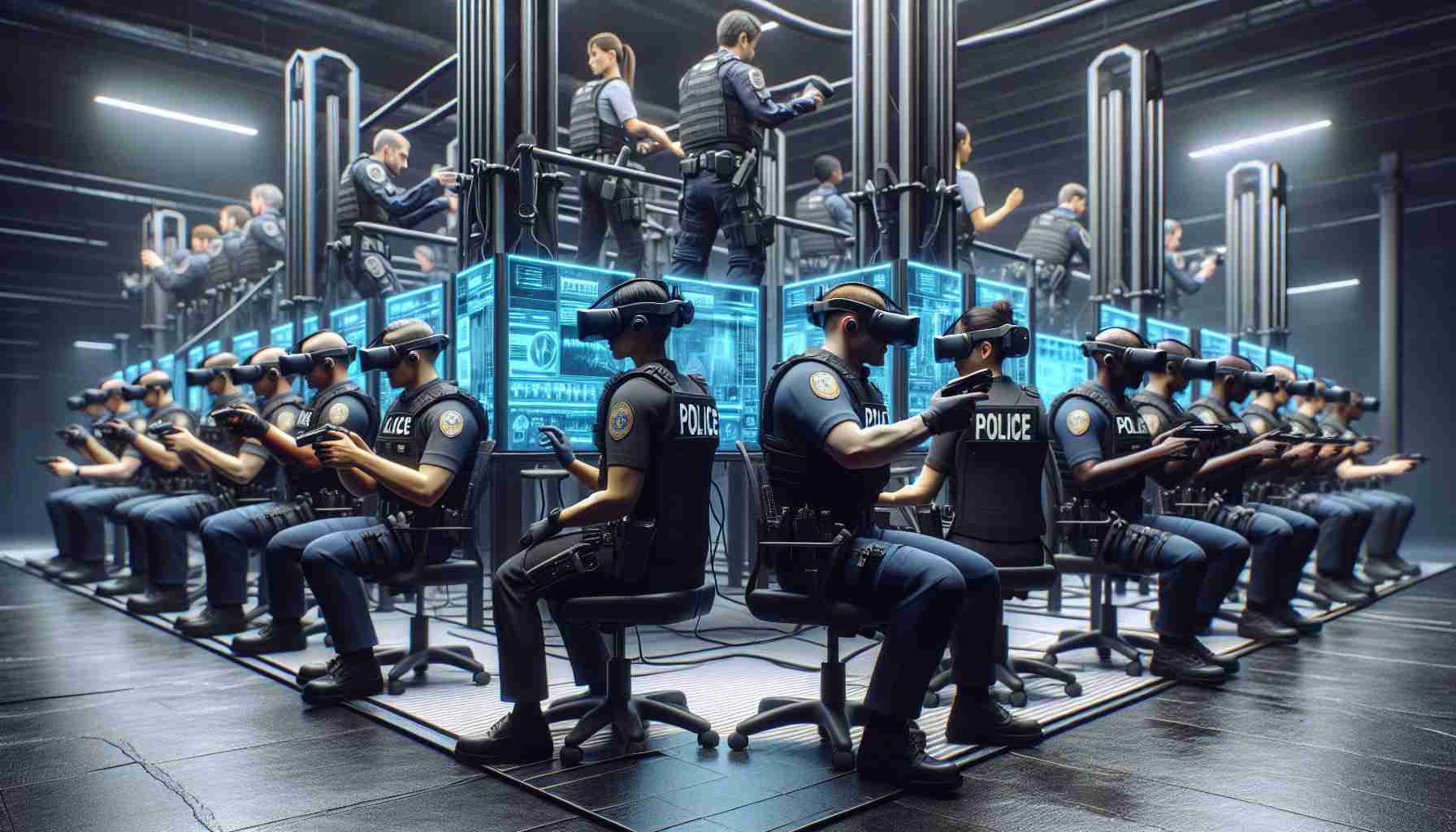The Woodridge Police Department has introduced groundbreaking virtual reality (VR) technology to revolutionize officer training in Illinois, taking the first steps towards enhancing de-escalation techniques and use-of-force tactics.
By embracing this cutting-edge technology, the police department aims to provide a more immersive and realistic training experience for its officers. Through the use of VR simulations, officers can now practice real-life scenarios in a controlled environment, allowing them to develop crucial decision-making skills and fine-tune their responses.
Unlike traditional training methods, this innovative approach offers officers the opportunity to safely experience high-stress situations without the risk of physical harm, both to themselves and to others. The virtual reality program will simulate a wide variety of scenarios, ranging from routine traffic stops to potentially dangerous encounters, enabling officers to gain valuable insights into de-escalation techniques and better understand the appropriate use of force.
The introduction of this VR technology marks a significant step forward for law enforcement in Illinois. The Woodridge Police Department’s forward-thinking initiative sets an example for other departments to follow, demonstrating the importance of embracing technological advancements to enhance training protocols.
Officer safety remains a top priority, and this new technology offers a realistic training environment that will contribute to reducing risks on the job. By immersing officers in virtual scenarios, they can develop critical skills, improve their judgment, and learn how to effectively respond to increasingly complex situations.
This groundbreaking technology is expected to positively impact the community as well. With well-trained officers who have had the opportunity to practice de-escalation techniques through VR simulations, there is a higher likelihood of successful non-violent resolutions, fostering trust and understanding between law enforcement and the public they serve.
In conclusion, the introduction of revolutionary virtual reality technology by the Woodridge Police Department signifies a significant progression in training methods for law enforcement in Illinois. Through simulated real-life scenarios, officers can refine their de-escalation and use-of-force tactics, ultimately leading to safer communities and improved relationships between the police and citizens. This progressive step should serve as inspiration for other departments to embrace innovative solutions for enhanced officer training.
Additional facts:
– The Woodridge Police Department collaborated with VR technology company MindRider to develop and implement the virtual reality training program.
– The VR simulations are designed to replicate various environmental factors such as weather conditions, lighting, and crowd dynamics, adding to the realism of the training experience.
– The virtual reality program includes feedback mechanisms that allow officers to review their performance and identify areas for improvement.
– The use of VR technology in police training is not limited to Illinois, as several other police departments across the United States have also adopted similar programs.
– The virtual reality training program is not only focused on de-escalation techniques and use-of-force tactics but also covers other important aspects such as effective communication, crisis intervention, and cultural sensitivity.
Key questions and answers:
1. What are the advantages of using virtual reality technology for police training?
– Virtual reality allows officers to practice in realistic scenarios without physical risk, enhancing their decision-making skills and responses.
– VR simulations can replicate various situations that officers may encounter on duty, providing valuable experience and insights.
– Officers can review and analyze their performance in the virtual environment, identifying areas for improvement.
– VR training can lead to better outcomes in real-life situations, promoting officer safety and non-violent resolutions.
2. Are there any challenges or controversies associated with virtual reality training for police?
– Some critics argue that virtual reality training may not fully capture the complexity and unpredictability of real-life encounters.
– There may be limitations in the variety of scenarios that can be replicated in virtual reality, potentially missing out on specific training needs.
– The cost of implementing and maintaining VR technology for police departments can be a significant challenge.
– Proper training and support are necessary to ensure officers effectively utilize and benefit from the virtual reality program.
Advantages of virtual reality training:
– Enhanced officer safety as officers can practice in high-stress situations without physical risk.
– Realistic simulations provide officers with valuable experience and insights.
– Improved decision-making skills and responses to complex situations.
– Potential for non-violent resolutions and building trust between law enforcement and the community.
Disadvantages of virtual reality training:
– Limited replication of real-life complexity and unpredictability.
– Potential limitations in scenario variety and customization.
– High cost of implementing and maintaining VR technology.
– Proper training and support required for officers to effectively use the program.
Related links:
– MindRider: Official website of the VR technology company that collaborated with the Woodridge Police Department.
– National Institute of Justice – Virtual Reality Training as a Tool for Police Training: An article discussing the benefits and challenges of virtual reality training for law enforcement.

















